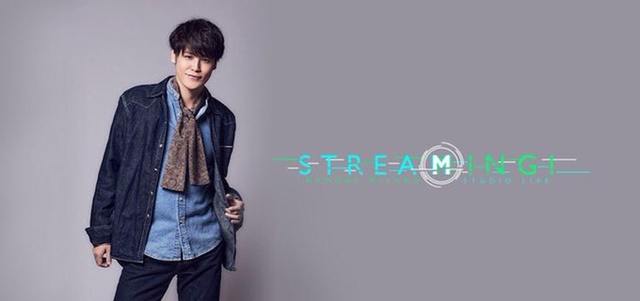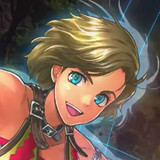#Ranking of Kings is an Imperfect but Special Anime

Table of Contents
“Ranking of Kings is an Imperfect but Special Anime”
Season aired: Fall 2021
Number of episodes: 23
Genres: Fantasy, Adventure, Drama
Thoughts: Sporting unique character designs and bright visuals that resemble children’s cartoons, different than the usual airing anime, Ranking of Kings caught my eye. If it wasn’t for my research on the source material beforehand, I might’ve written it off as an anime aimed towards children and skipped it in its entirety. However, the story features elements like blood, torture, and emotional turmoil, making it very clear that this anime is intended for a more mature audience.
Ranking of Kings takes place in a world where all kings are ranked against each other in a numerical system of strongest to weakest. Prince Bojji is the son of King Bosse, a highly ranked king that has fallen ill. Unlike his father, Bojji is small, physically weak, and deaf. He is constantly overlooked by everyone around him and lives his days sporting a brave smile until he meets Kage, a shadow clan thief. Their chance meeting creates a bond that jumpstarts Bojji’s dream — becoming the best king in the system.
Ranking of Kings has a strong emotional core, but unfortunately, I found fault with certain resolutions and plot reveals. The first cour is stronger through its excellent pacing, less reliance on dialogue exposition, and focus on Bojji and Kage’s relationship. In the first cour, Bojji is looked down on by everyone in his kingdom, but his fighting spirit and determination inspire Kage, a thief with a tragic background, to partner up with Bojji and support Bojji’s claim to the throne. Kage’s past and their first step towards friendship were woven together so well that I was bawling my eyes out for the entirety of the episode. As the first cour continues, their friendship is what drives the plot — what they do together, how they help each other, and how they each protect one another.

The first cour also effectively characterized the many supporting characters. Queen Hiling, a stepmother queen who’s drawn like and comes off as an evil stepmother in a fairytale, turns out to be a well intentioned and mistaken woman. For every haughty line she speaks, there’s an outward expression of protectiveness and affection that hints at the reveal of her true nature later on in the series. On the other hand, Despa, Bojji’s handsome tutor, has a shallow side that obsesses over money and appearances but still holds a wise and kind attitude towards his student. These are just two examples of the many surprising character reveals for the supporting cast that the first cour manages to successfully portray to the audience.
Unfortunately, the second cour pivots away from Bojji’s relationship with Kage and the supporting characters and instead focuses on a malicious fantastical plot happening in Bojji’s kingdom. Bojji eventually plays an active role resolving the conflicts, but his geographical separation from the conflicts made the second cour feel slower. Instead of a singular protagonist to follow, the anime was constantly switching perspectives within a single episode. First, show what’s happening in the kingdom. Second, show what’s happening with the bad guys. Third, show what Bojji is doing. Fourth, go back to the kingdom and where the bad guys currently are at. It quickly becomes tiresome to follow, and it goes on for most of the second cour.

Kage’s agency is relegated to the sidelines in the second cour as he exists only to cheer Bojji on and watch what Bojji does. Compared to the first cour where his actions directly affected both of their character development as well as the plott, this cour’s treatment of him felt like a significant downgrade for a character that shares the protagonist role with Bojji. Yes, there is an important scene in the second cour that focuses on Kage alone, and the finale centers around him and the relationship he’s built with Bojji, but that still doesn’t change how inconsequential he ends up during the second half of the series.
The second cour also marks a pattern of using dialogue to describe what we can already see — something the first cour largely avoided. Fight scenes were especially bad, as spectating characters would voice what’s happening in the fight, why it’s dangerous, and why it’s such a difficult fight. The fight sequences already answered all of those questions, and the unnecessary dialogue simply detracted from the brillant animation.
Despite how childish the anime looks at first glance, its animation is actually incredibly sharp, mature, and purposeful. The fight sequences marvel with panning shots and sudden perspective shifts. A weapon quivers as it clashes against another, and characters’ faces distort when they fight for their lives. This anime has all the animation and visual prowess that it doesn’t need any dialogue. Episode 21 is the shining jewel of beautiful, wordless fight scenes. A much-anticipated battle takes almost the entire runtime and features symbolic shots, dynamic action, and realistic character expressions. Even better, it ends with an absolutely terrifying scene pulled right out of demonic horror genres that makes me shudder just remembering.

The soundtrack that accompanies the animation is majestic and made to purposefully resemble sweeping fairytale compositions. Since the story leans into many fairytale elements, this soundtrack choice fits the bill perfectly. The voice cast also do a great job of embodying the characters, though Ayumu Murase takes the spotlight. He’s completely unrecognizable as Kage and completely melts into the role in ways that the other seiyuus do not.
Luckily, despite all my gripes about the second cour, the finale does manage to hold the series together by returning to what made this anime so special in the beginning — focusing on the power and love behind Kage and Bojji’s friendship. Still, there are problematic sides to this anime. One conflict resolves in a way that I severely disagree with but will not divulge because of how much it spoils. Sadly, the worldbuilding also links to Japan’s history of colonialism, and many others have pointed this disappointment out.
As unfortunate as all the aforementioned issues are, there is, however, something of equal importance: Bojji is a disabled protagonist in a fantasy setting. Disabled protagonists as a whole are rare enough in stories, but they are even rarer in genres with stories that aren’t focused on real-life drama. The story simultaneously cares about Bojji’s deafness while not letting it define him, and he then goes on a heartwarming journey to make friends, grow strong, and realize his dreams. I think that is something worth remembering.
Rating
Plot: 7.5 (Multiplier 3.5)
Characters: 7.5 (Multiplier 3.5)
Voice acting: 7.5
Art/Animation: 8.5
Soundtrack: 8.5
FINAL SCORE: 77
If you liked the article, do not forget to share it with your friends. Follow us on Google News too, click on the star and choose us from your favorites.
For forums sites go to Forum.BuradaBiliyorum.Com
If you want to read more anime-manga articles, you can visit our anime-manga category.




